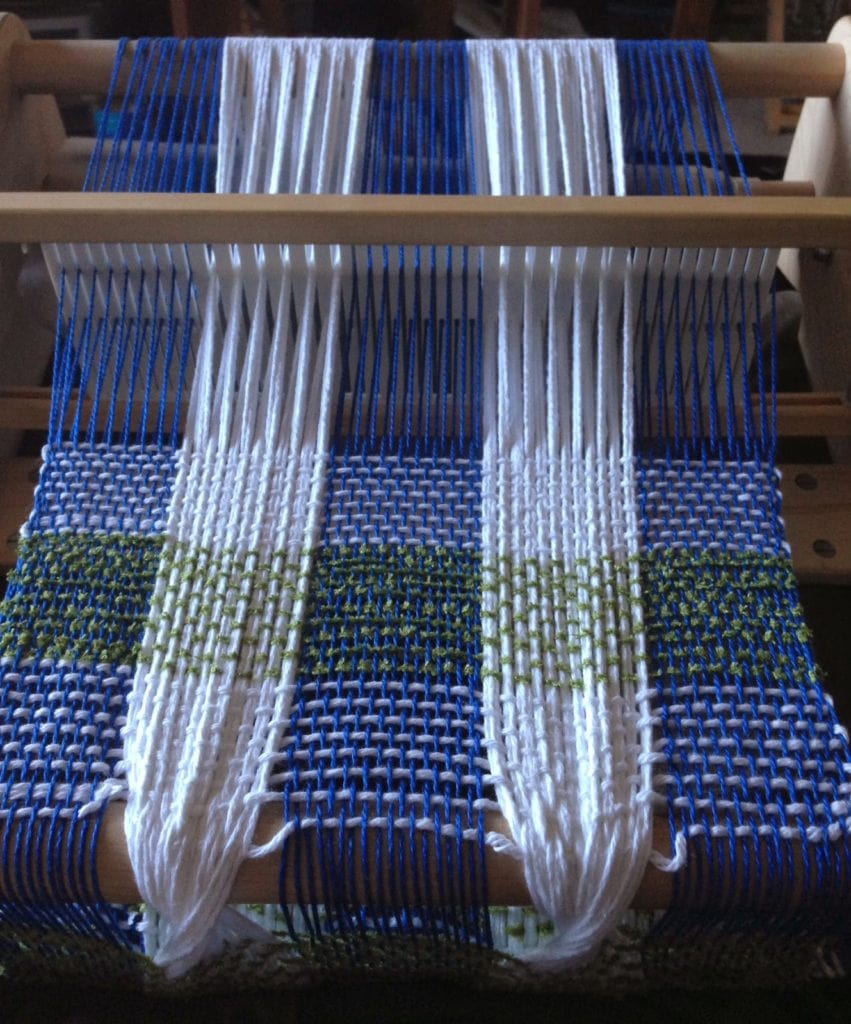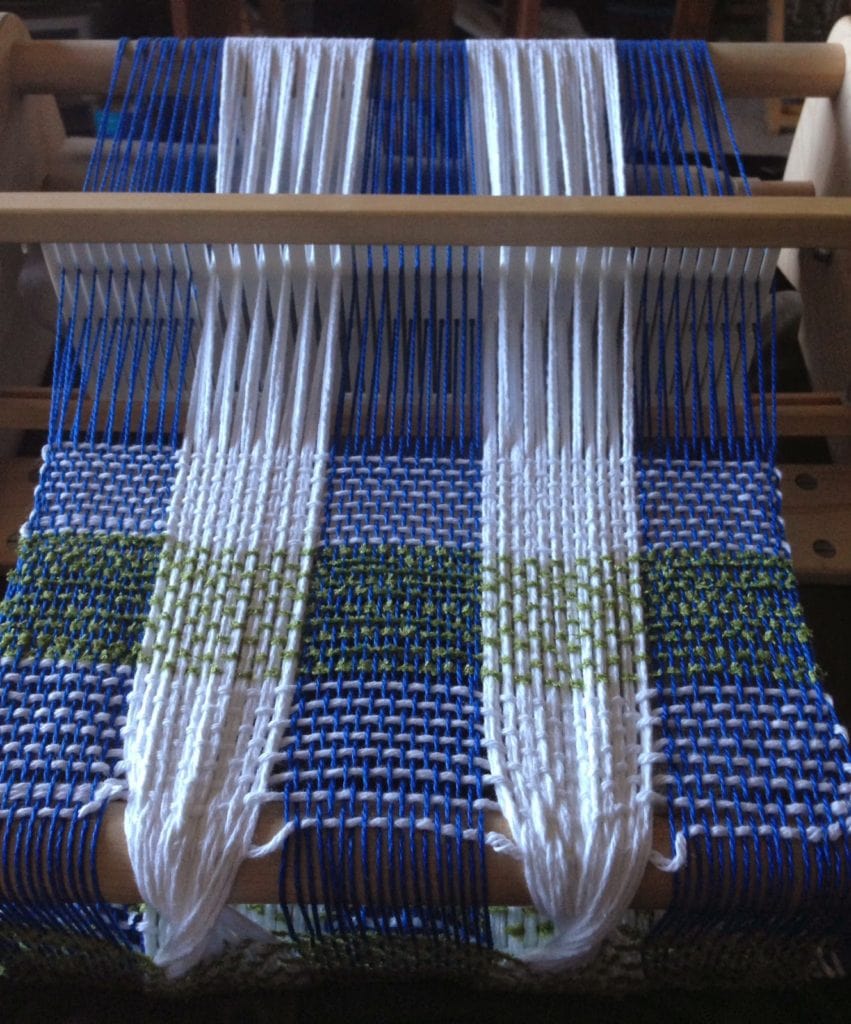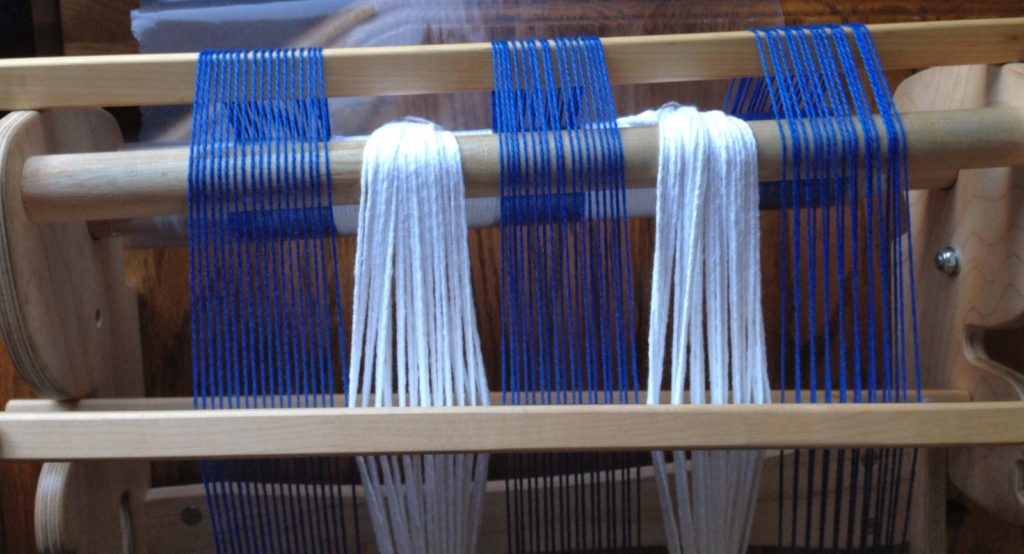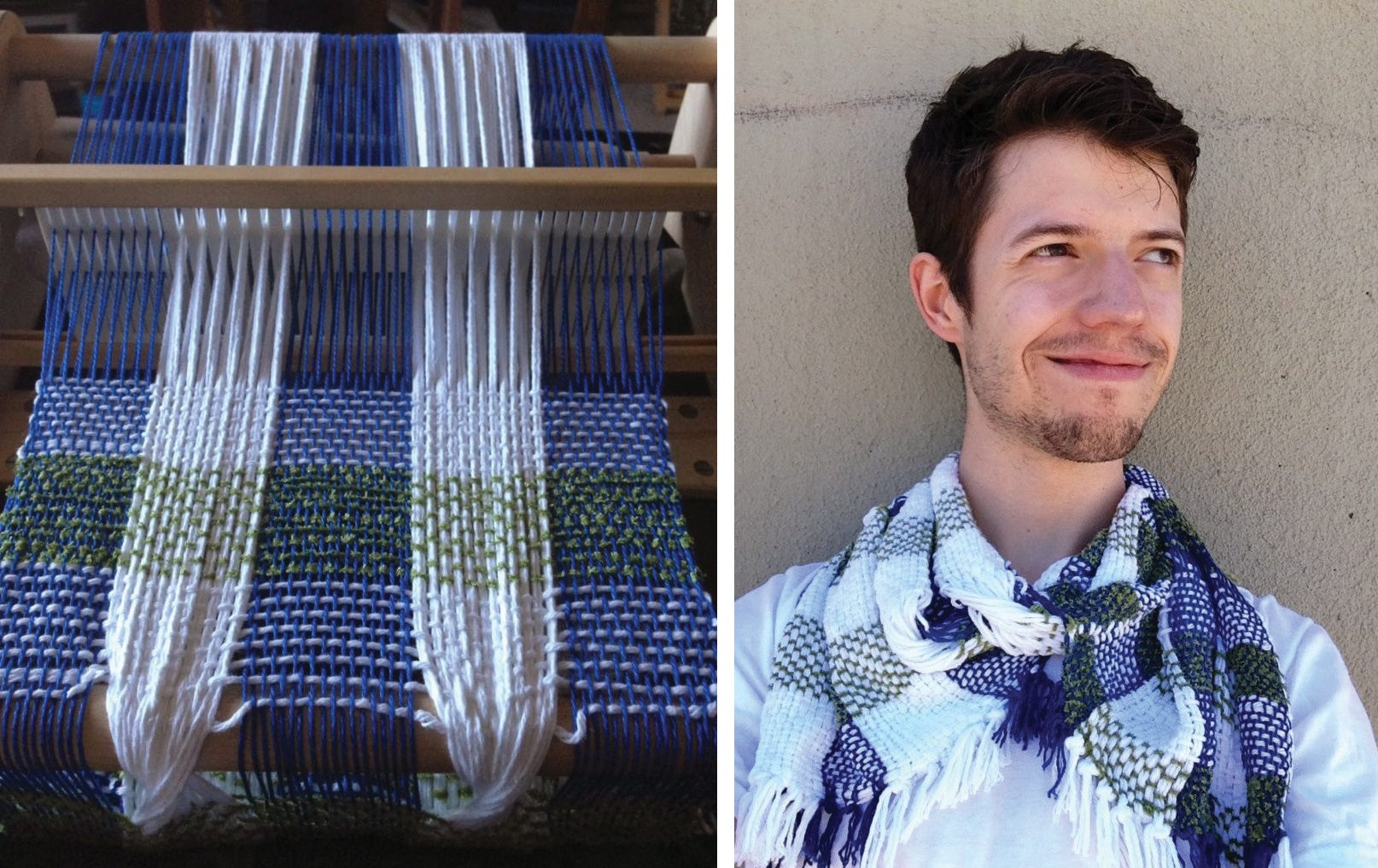Summer Cowl
Designed and woven by Benjamin Krudwig
When I was a child, summer was my favorite season. White t-shirts, blue jeans and grass stains on both meant I had a "productive" day. For this variable dent reed cowl, I wanted to capture that summer feeling in an accessory I could wear throughout the year.
I wove this piece with cotton yarn and left large spaces in the fabric for a cowl that is airy and lightweight, even though the yarns are somewhat heavy.
This was a joy to weave and is even more fun to wear! Weave your own and share it with us on our social media!
Project Specs
Weave structure: plain weave with warp twists
Total warp length: 2 yds (includes take-up and loom waste)
Number of ends: 78—count tripled strands of worsted weight cotton as 1 end
What You'll Need
-
3/2 cotton in blue (200 yards)
-
worsted weight cotton in white (200 yds)—I used Lily's Sugar and Cream)
-
sport weight green rayon chenille (50 yds)
-
15” rigid heddle loom
-
15” variable dent reed with three 8 dent and two 5 dent sections
-
two stick shuttles
Materials
Equipment
Directions
Warping and Weaving
Set up the variable dent reed: 8D, 5D, 8D, 5D, 8D. Warp with 18 ends of blue 3/2 cotton in the 8 dent sections and 12 ends of white worsted cotton held triple and counted as one in the 5 dent sections.

Weave 8 picks of single stranded (not tripled) white cotton, 10 picks of green chenille, 8 picks white cotton, 10 picks of green chenille.
Work the first twist section: loosen one knob on the variable dent reed, and then remove the other knob to free up the dents so you can move them. Rotate the 5-dent sections clockwise or counter-clockwise making sure you catch the "slot" threads on the side of the section. Re-situate the reed sections in the reed holder and replace the knobs.
The process of twisting the sections diminishes the size of the shed, so use caution when passing your weft yarn through.

Do another repeat the stripe sequence and turn the sections the opposite way you turned them before to prevent twist from building up behind the reed.
Since the twisting of the reed sections shortens the white warp threads, I used a wooden apron bar behind my loom as a double back beam to pick up the slack in the blue threads. If this doesn't provide enough tension, you can weight the stick.

Keep repeating this pattern until you reach the end of your warp. I got 6 sections of woven fabric punctuated by 5 twist sections.
Finishing and Assembly
After I took the fabric off the loom, I knotted the fringe and folded the fabric into a tube (shown here on a strip of paper—fold the length of the weaving along dotted lines). Then I hand-sewed the fabric edges together along the folds and selvedges to form a tube.

